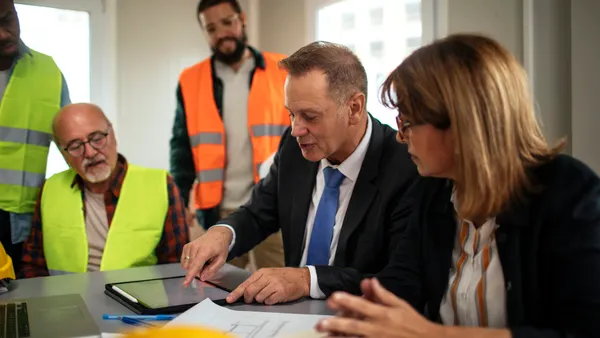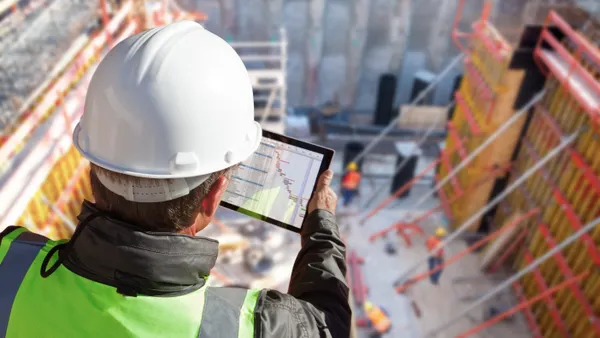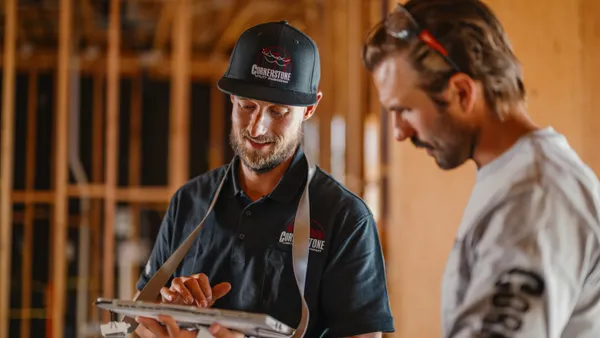The following is a guest piece written by Cale Collier, vice president of scan and model services at Acensium.
Construction projects, and their profits, are defined by their budgets. Minimizing contingency and maximizing returns are the primary goals for project managers. Reducing rework can be a key way to reduce costs, increase profit margins and complete projects faster.
Reduce risk of rework or costly downtime during planning
Reality capture is a set of tools that creates data points from 3D scans or photogrammetry — making measurements from photographs — of the as-built, physical environment to create a "digital twin" model.
3D scanning has become a readily available tool to employ on all stages of a new construction or retrofit construction project. 3D reality capture scanning creates digital as-built drawings quickly.
These "digital twins" are cost-effective tools that can be used for documentation, project planning, daily confirmation of project progress and adherence to design/code specifications.
Combining 3D reality capture with 3D modeling and simulation allows project managers to plan each phase and step of a project in detail, thus reducing risk and exposing unexpected difficulties in construction or demolition. The method provides the most accurate as-built picture possible, generating an asset that can be used before, during and after the execution of any major project to reduce rework and mitigate costly delays and downtime.
Reality capture positions your team for success before the project even begins by ensuring the planning and design phases have a 3D environment with real-world dimensions where new measurements can be made virtually.
Validate each project phase digitally
With 3D reality capture, the project gets accurate measurements that can be used for prefabrication, scheduling and sequencing. These measurements can be confirmed or remade from any computer. Alternatively, entirely new measurements can be made without requiring manual measurement on site. Construction verification scans can be performed at any point in the project, ensuring the work is to spec.
3D scans also aid in project execution by acting as a project management tool, allowing simulation or visualization of critical tasks or steps that can be used as a communication tool for jobsite management.
3D record keeping
When a project is complete, the final 3D representation can be used in invaluable, innumerable ways. For one, 3D scanning after a project delivers a baseline of as-built conditions for record keeping. 3D-scanned as-builts are ready-made assets that can be referred to when working on the next project, employed as baselines for virtual reality or augmented reality simulations and tours, saved as documentation for insurance providers and the Authority Having Jurisdiction, and used in facility safety analysis, process improvements and more.
3 tips to get started with 3D scanning
-
Scan early and often—Scanning can be a valuable validation tool at any point during a project, but it delivers the most value and return on investment if used as part of initial planning phases as well. Scanning for final as-built conditions creates a tangible asset that can be used in many ways. The small changes to workflow to account for a few periodic scans carves out long-term savings in time and costs.
- Make sure scanning services come with modeling—Scanning provides the base asset, but added 3D modeling services ensure the scanned snapshot of reality is ready to use when working with new structures, new equipment or environmental changes. Raw point cloud data that scans are compiled into after project completion will almost always require some level of additional modeling to be useful to the project.
- 3D Reality Capture is for everyone—3D environments aren’t just for engineers or project planning. They can be used as an incredibly effective communication tool for both major concepts and small details that are easy for anyone — from contractor to investor — to understand. Using a 3D environment in this way, as a communication and collaboration tool, is more than just getting buy-in. It mitigates the risk of mistakes — saving time and money.












